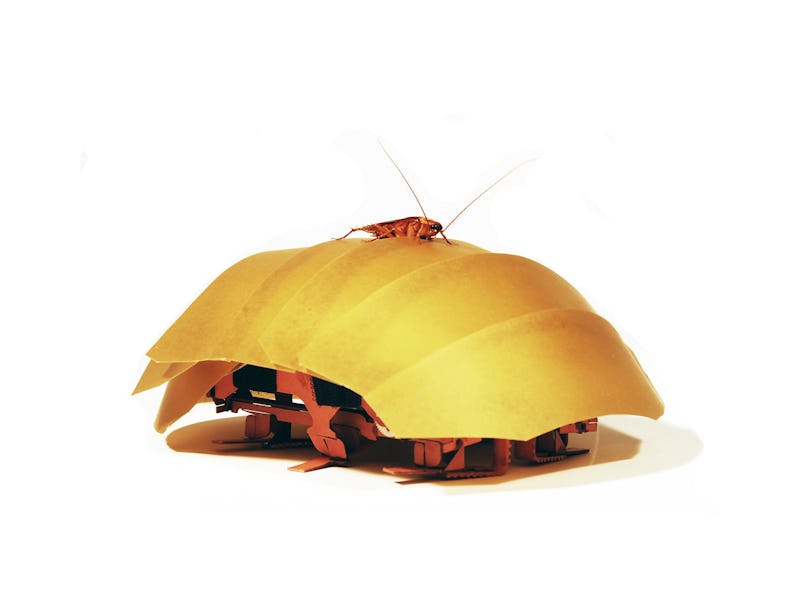Researchers Spawn Compressible, Cockroach-Inspired Robots
We haven't quite matched nature.

Researchers at UC Berkeley have discovered yet another reason why cockroaches are nightmarish. Except, instead of recoiling in horror at their discovery as you or I might, the researchers used it to create … a robot.
The discovery: American cockroaches have compressible bodies that are able to withstand forces up to 900 times their body weight without injury. That’s equivalent to an “average person being crushed by more than 123,000 pounds,” as stated in the video below.
Not only that, but when compressed to a quarter of their height of just four millimeters, the cockroaches “still locomoted rapidly at 20 body lengths per second.” The scientists dubbed this locomotion “body-friction legged crawling.”
Squish:
This discovery, on its own, is informative. But it’s mostly terrifying. The scientists literally “challenged [the American cockroaches] with a series of decreasing crevice heights.” Faced with an obstacle course from hell (or a scene out of Star Wars), the cockroaches made it out, time and time again, unfazed.
Beyond that, though, the discovery proved useful. One of the two lead researchers, Kaushik Jayaram, has a Ph.D. in integrative biology with an emphasis on “biologically-inspired design and robots.” So, his play, naturally, was to turn the discovery into a robot.
The robot, nicknamed CRAM (Compressible Robot with Articulated Mechanisms), turned out to be a 75 mm in height, compressible, and still able to locomote down to 35 mm. The robot has legs that, even when the pliable shell is compressed, continue to function, enabling the robot to navigate qua cockroach. But it’s got a ways to go to truly mimic the American cockroach: it’s only able to withstand 20 times its weight.
The researchers, Dr. Jayaram and Dr. Robert Full, think that this technology could prove useful in disaster situations.
We see this robot useful both as a physical model to test future hypotheses of the mechanisms permitting confined-space locomotion, as well as a first step toward the development of a soft search-and-rescue robot that can penetrate the rubble left by tornados, earthquakes, or explosions.
And while that’s an admirable goal, maybe, in addition, the robo-roaches will one day be downsized and made to seek and destroy the little buggers.
One can hope.